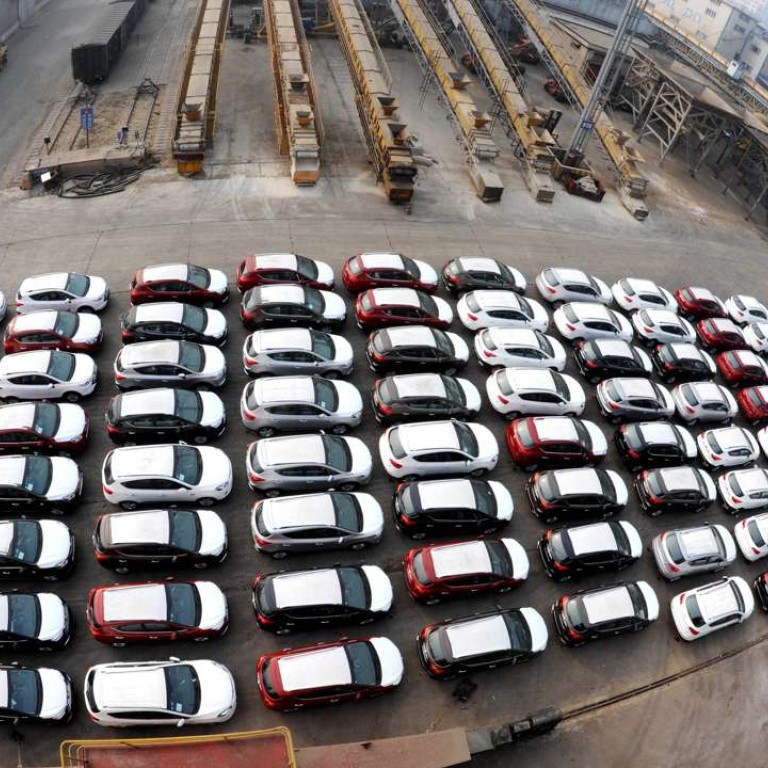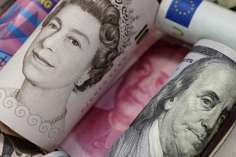
Analysts split on Brexit’s effect on yuan and wider Chinese economy
Focus likely to remain on currency moves to offset export pressures and keeping cash outflow under control
Divisions are appearing among top economists, over the likely impact of Brexit on China’s macro economy.
Foreign analysts expect China will allow further deprecation of yuan to offset any export pressure caused by the British breakaway, while mainland-based commentators are tending to argue the currency rate will remain stable, and cash outflow will also be kept under control.
Economists at BofA Merrill Lynch have cut their annual 2016 GDP forecast for China by 0.2 percentage points to 6.4 per cent, largely due to a tightening in domestic financial conditions.
But they did add, there could be an indirect drag on China’s economic growth from Brexit.
“As direct trade links between China and the UK are far from strong, the forecast revision is based on potential tightening in financial conditions in China, resulting from capital outflow triggered by yuan depreciation,” BofA Merrill Lynch economists wrote in a research report, issued Sunday.
Their biggest concern was based on the expectation that China’s central bank will have to allow faster depreciation of the yuan against the US dollar in the aftermath of Brexit, to offset building pressure on exports.
“As part of the PBOC’s (People’s Bank of China) easing measures to counter downside growth risks in China, the risks of undershooting in monetary easing remain high in the second half of 2016,” the report said.
“Consequently the inadvertent tightening in financial conditions will likely hurt growth in the third and fourth quarters this year.”
But some, including Li Yimin, an macro economy analyst with Shenyin Wanguo Securities in Shanghai, disagree with the assumption that aggressive capital outflows will cause domestic liquidity tightening, forcing the PBOC to adopt monetary easing hard to manage.
“The PBOC and other financial regulators are becoming more skilled in stemming capital flight, particularly after the lessons they learned from the two intensive capital outflows following the yuan’s abrupt deprecation, last August and this January,” said Li.

stabilising the currency, balancing the flow of funds, and tightening capital-account control.
“In this case, there is no need to worry about intensive outflow,” he said, “so I do not anticipate any considerable easing.”
Shanghai banking sources told the SCMP on Tuesday that the city’s foreign exchange authority had asked banks to strengthen due diligence checks on overseas direct investment, to stem illegal capital outflows.
The PBOC on Monday cut the yuan’s fixing to 6.6375 against the US dollar, the lowest level in five and a half years, as the pound dropped to a three-decade low after Britain’s stunning decision to break from the European Union.
The yuan’s daily fixing dropped 0.9 per cent from the previous trading day, marked the biggest 24-hour drop since August, when the PBOC made an abrupt move to devalue the currency.
Some analysts said the yuan’s speed of depreciation still lagged behind that of other Asian currencies, arguing the PBOC was likely to accelerate the devaluation to maintain export competitiveness.
BofA Merrill Lynch analysts said they expected the PBOC to push onshore yuan to 6.8, and above, against the US dollar in coming months.
They said this would cause another pick up in capital outflow, and the central bank would then have to allow faster domestic expansion to maintain stability in money creation, a similar cycle to what happened last year.
With the Brexit risks becoming a reality, we see significant downside pressures on China’s growth from trade, capital outflow and financial market channels
Then, companies with dollar-denominated liabilities rushed to repatriate their debt, after the drastic depreciation in August.
“This kind of debt repayment became a key driver of capital outflow,” the report said.
“To maintain money creation stability, the central bank had to allow faster domestic expansion.
“It wasn’t until February or March this year that it regained control of liquidity with the help of foreign exchange controls, and stabilising the dollar exchange rate.”
“Consequently, diminishing capital outflow gave way to a rebound in property and infrastructure investment,” it added.
Nomura analysts shared the concern.
“With the Brexit risks becoming a reality, we see significant downside pressures on China’s growth from trade, capital outflow and financial market channels,” they wrote in a note issued on Tuesday.
Nomura has now cut China’s real GDP growth forecasts by 0.4 percentage points for the second half, leaving the 2016 full-year forecast at between 6.0 per cent and 6.2 per cent growth.
Li Daokui, a former external adviser to the International Monetary Fund who now heads a top think tank for the central government, argued the Brexit may well offer more opportunities to China, as Britain becomes increasingly reliant on trade and investment from the country.

